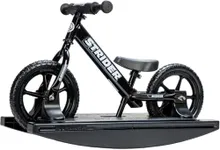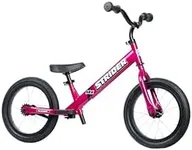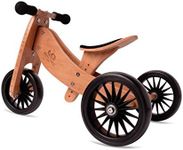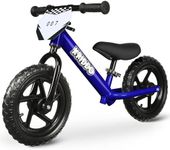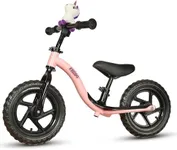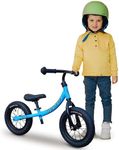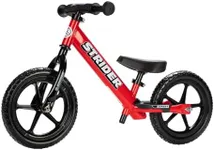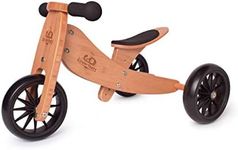Buying Guide for the Best Balance Bikes
Choosing the right balance bike for a child is all about matching the bike to their size, age, and skill level. Balance bikes are designed to help kids learn balance and coordination before they transition to pedal bikes. When shopping for a balance bike, it's important to focus on features that make the bike comfortable, safe, and easy to use for your child. Understanding the key specifications will help you make a choice that encourages confidence and fun while learning to ride.Wheel SizeWheel size refers to the diameter of the bike's wheels, usually measured in inches. This is important because it affects how well the bike fits your child and how easy it is for them to control. Common sizes are 10, 12, and 14 inches. Smaller wheels (10 inches) are best for very young or petite children, as they keep the bike low to the ground and easy to handle. Medium sizes (12 inches) are the most common and suit most toddlers and preschoolers. Larger wheels (14 inches) are better for older or taller kids who need a bit more height and stability. To pick the right size, consider your child's height and inseam measurement, making sure they can sit on the seat with both feet flat on the ground.
Frame MaterialThe frame material determines the bike's weight, durability, and sometimes its price. Balance bikes are typically made from metal (steel or aluminum), wood, or composite materials. Steel frames are strong and durable but can be heavier, which might be harder for smaller kids to maneuver. Aluminum frames are lighter and rust-resistant, making them easier for young children to handle and carry. Wooden frames are lightweight and have a classic look, but may not be as adjustable or weather-resistant. Choose a frame material that matches your child's strength and your preference for durability and maintenance.
Seat Height AdjustabilitySeat height adjustability refers to how much you can raise or lower the seat to fit your child as they grow. This is important because a properly fitted seat helps your child balance and push off the ground comfortably. Some bikes have fixed seats, while others offer a wide range of adjustment. If you want the bike to last through growth spurts or be shared between siblings, look for a model with a good range of seat height adjustment. Always check that the lowest seat setting allows your child to sit with their feet flat on the ground.
WeightThe weight of the balance bike affects how easy it is for your child to control, pick up, and carry. Lighter bikes are generally easier for younger or smaller children to handle, making learning less intimidating and more fun. Heavier bikes can be more stable but may be difficult for some kids to manage, especially if they need to lift the bike over obstacles. As a rule of thumb, the bike should not weigh more than about 30% of your child's body weight. Consider your child's strength and confidence when choosing the right weight.
TiresBalance bike tires come in two main types: air-filled (pneumatic) and solid (foam or plastic). Air-filled tires provide better cushioning and grip, making them ideal for outdoor use on uneven surfaces. However, they can get punctures and require occasional maintenance. Solid tires are maintenance-free and lighter, but they may not absorb bumps as well, making them better for smooth indoor or paved surfaces. Think about where your child will ride most often and choose the tire type that matches those conditions.
BrakesSome balance bikes come with hand brakes, while others rely on kids using their feet to stop. Brakes can help children learn to control their speed and prepare them for pedal bikes, but they add complexity and may not be necessary for very young riders. If your child is older, more adventurous, or will be riding on slopes, a hand brake can be a useful feature. For beginners or very young children, a simple, brake-free design may be easier to use.
